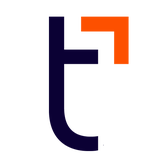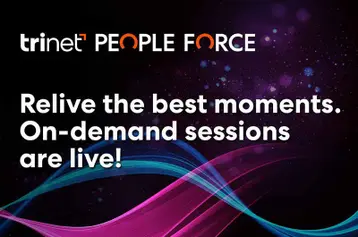How to Develop Benefits Strategies for Modern Workplaces

Table of contents
- 1.Information to Collect
- 2.Assess organizational goals
- 3.Conduct employee needs assessment
- 4.Analyze industry standards
- 5.Decisions to Make
- 6.What's your budget?
- 7.Decide where and/or how you will secure benefits
- 8.Professional employer organizations (PEOs)
- 9.In-house administration
- 10.Benefits administration software
- 11.Offer options
- 12.Compliance check
- 13.Actions to Take
- 14.The Most Common Benefits
- 15.The value of great benefits
- 16.Attracting and retaining talent
- 17.Improving employee satisfaction and morale
- 18.Boosting productivity and performance
- 19.Enhancing company reputation
- 20.A provider for your benefit strategies
One of the first questions someone asks when applying for a new job is what are the benefits? Benefits are often a primary factor in accepting a job offer, or turning it down, because they can make a significant impact on the life of an employee.
Workplace benefits are non-wage compensations provided to employees in addition to their regular salary or hourly wages. These benefits are intended to enhance overall salary packages and can include a wide range of enticing offerings, from health insurance to retirement savings plans to pet insurance and other perks.
Developing effective employee benefit strategies is crucial for attracting top talent, improving employee retention, and keeping employees engaged. While businesses may be mandated to offer certain benefits, others are seen as perks. To determine their benefit offerings, companies must consider the needs of their employees, what the market is doing and any requirements.
An effective benefits strategy contributes significantly to employee morale and productivity. When employees feel valued and supported with comprehensive benefits, they are more likely to experience job satisfaction and a sense of belonging.
This guide will walk you through developing an effective benefits strategy from start to finish, as well as offer tips for effective benefits administration.
Information to Collect
The first thing a small business needs to do when creating a benefits strategy is to gather pertinent information on their current offerings and employee needs. Work with your human resources department to do the research. Use all the resources at your disposal to gather the data, including focus groups, surveys, and exit interviews.
Here are some key areas to focus on:
Assess organizational goals
A good place to start is aligning your benefits strategy with your overall business strategy. Determine how the benefits strategy can support long-term business objectives such as growth, profitability, and improving employee retention. Do you wish to use benefits as a recruiting and retention tool? How important is cost containment? Are you trying to overhaul your compensation and rewards structure? A goal for cost containment could include measures such as adding telemedicine services or encouraging employees to get preventive care.
Conduct employee needs assessment
Employee preferences should be a key driver. Gather data on what benefits employees value most. This can be done through surveys, feedback sessions, or analyzing industry trends and benchmarking. Determine what your employees want and prioritize. Look at your current benefit offerings and how they are being used. Are there benefits that employees don't seem to value? What can be done to improve employee engagement?
Consider demographics. To offer relevant benefits as well as get an idea of costs, assess your workforce in terms of age, family status, health requirements and related areas. The benefit needs of your workforce will be influenced by their average age, the number of employees who have children and other demographic factors.
Analyze industry standards
Use benchmarking. Research what benefits are commonly offered within your industry and similar providers to make sure your offerings are competitive. Determine your industry benchmarks for benefits and strive to meet or surpass them for a competitive edge.
Study emerging trends. Stay informed about new and innovative benefits that are gaining popularity, such as wellness programs and flexible work arrangements that support a healthy work-life balance.
By collecting and analyzing this information, businesses can design a benefits strategy that can meet requirements, aligns with business goals, and satisfies employee needs, ultimately enhancing job satisfaction and productivity.
Decisions to Make
Next, there are some important decisions to make on your benefits and benefits administration.
What's your budget?
Analyze the financial implications and set a realistic budget for the benefits program. Consider the cost of potential benefits and their impact on overall compensation, as well as the potential return on investment in terms of long-term growth.
The average cost of benefits is about 30% of total employee compensation for private sector workers, according to the U.S. Bureau of Labor Statistics.
Decide where and/or how you will secure benefits
Based on your company's budget and strategic needs, determine which model of benefits procurement and administration is best suited for you. Here are some possibilities to consider.
Professional employer organizations (PEOs)
There are many benefits to engaging with a PEO. Accessing benefits and benefits administration from a PEO can be an effective solution for businesses that prefer to outsource tasks.
PEOs provide comprehensive human resources services to small and medium-sized businesses. A PEO helps businesses with their HR functions such as payroll processing, access to benefits, payroll tax administration, and HR.
PEOs handle a wide range of HR functions, including benefits administration, and offer several advantages:
- Access to competitive benefits. PEOs can provide access to premium benefits that might be difficult for smaller companies to secure on their own.
- Benefits compliance. PEOs provides benefits compliance support for PEO-sponsored benefits so you get assistance with certain reporting and filling requirements.
- Comprehensive HR support. Beyond benefits administration, PEOs offer support in areas like payroll processing and employee relations, allowing businesses to focus on core operations.
In-house administration
Some companies choose to manage benefits administration internally, which can provide greater control over the benefits offered and how they are managed. However, this approach requires:
- Dedicated HR resources. Managing benefits in-house necessitates a team with expertise in HR and benefits administration to handle tasks such as enrollment, compliance, and employee communication.
- Investment in technology. Companies need to invest in HR software that can automate and streamline benefits administration to minimize manual work and vulnerability for errors.
Many companies that take this route use an insurance broker to help them find coverage for their employees. Insurance brokers are professional intermediaries who help clients find and purchase insurance policies. They have a deep understanding of the insurance market and the nuances of different policies. By assessing a client's specific risks and needs, brokers may recommend the appropriate coverages, including health insurance coverage. Their role involves comparing policies from multiple insurance providers and helping clients receive the best coverages, terms and rates.
Benefits administration software
Benefits administration software is designed to help organizations efficiently manage employee benefits. These platforms offer a range of features that simplify the administration of benefits, including:
- Integration capabilities. Effective software should integrate with existing HR and payroll systems to minimize redundant data entry and maintain consistency across platforms.
- Self-service portals. Many systems provide self-service portals that allow employees to view, enroll in, and manage their benefits information, alleviating the administrative burden on HR teams.
- Compliance and reporting. These tools often include features to assist with compliance requirements, as well as robust reporting capabilities to track benefits usage and costs.
There are many benefits administration software options on the market, each offering different features tailored to various business needs.
Offer options
The individuals in your workforce have different needs and motivations. They will appreciate having options when it's time to sign up for benefits. By giving employees flexibility in choosing their benefits, you are creating the potential for a more engaged workforce and a positive corporate culture.
Looked at in another light, the benefits themselves might offer options. Flexible scheduling, the possibility for remote work, flexible savings accounts and other benefits that address work-life balance support employee well-being. As a result, employees are more productive and creative, contributing to the organization's success.
Compliance check
It’s necessary to make sure the benefits you offer comply with all applicable laws. Familiarize yourself with federal and state laws regarding mandatory benefits such as Social Security, Medicare, unemployment insurance, and workers' compensation. Find out what the Affordable Care Act (ACA) and the Family and Medical Leave Act (FMLA) require of your business.
It's also important to make sure you understand the Employee Retirement Income Security Act (ERISA), COBRA, and HIPAA requirements to mitigate issues and potentially expensive penalties.
Actions to Take
Once you have done your research and made the decisions that will shape your benefits strategy, there are several steps to take before it's fully developed.
- Clear communication. Develop a strategy for communicating the new benefits package to employees. Make sure they understand the offerings and how to access them.
- Launch the program. Roll out the benefits package — taking full advantage of your communication plan to make sure all employees are informed and can make the most of the offerings.
- Feedback mechanisms. Establish systems to gather ongoing feedback from employees about the benefits program. The information can help you to make necessary adjustments and improvements. Even if you can't give employees everything they ask for or solve every problem, it's important that they know you are open and listening.
- Regular review. Continuously monitor and evaluate the program so it remains relevant and effective. Regularly update the benefits based on employee feedback and changing needs.
The Most Common Benefits
While benefits can vary dramatically depending on the industry or size of a company, there are a few broad categories that most benefits fall under.
These include:
- Mandated benefits. These are benefits that employers are mandated to provide. In the U.S., these include Social Security, Medicare, unemployment insurance, and workers' compensation. Companies with 50 or more full-time employee equivalents are also required to offer medical insurance or potentially pay an ACA penalty.
- Health and wellness benefits. This includes medical, dental, and vision insurance, as well as wellness programs aimed at promoting employee health.
- Retirement benefits. Retirement savings plans such as 401(k) plans, pension plans, or other retirement accounts help employees save for the future.
- Time off. This can include vacation days, sick leave, and holidays, allowing employees to take time off while still receiving their salary.
- Fringe benefits. These are additional perks that may include flexible work hours, remote work options, tuition reimbursement, childcare assistance, and lifestyle spending accounts.
- Professional development. Employers may offer additional opportunities for training and development, such as workshops, seminars and courses to help employees improve their skills and promote professional growth.
The value of great benefits
While providing additional benefits on top of what is mandated may seem like a hassle, it is a worthwhile investment. Offering great employee benefits provides significant value to both organizations and their employees.
Here are some of the key advantages:
Attracting and retaining talent
Competitive edge. A robust benefits package can make an organization stand out in a competitive job market. Many job seekers consider benefits as a critical factor when choosing between potential employers.
Lower turnover. Companies with strong benefit packages generally experience lower employee turnover rates. Employees are more likely to stay with an employer who meets their needs, minimizing the costs associated with hiring and training new staff.
Improving employee satisfaction and morale
Increased job satisfaction. Benefits contribute to higher job satisfaction, as they show employees that the company values their well-being and work-life balance. This can lead to greater loyalty and commitment, as well as conveyjob security.
Improved morale. When employees feel valued and supported through comprehensive benefits, their morale and engagement levels tend to increase, fostering a positive work environment.
Boosting productivity and performance
Health and well-being. Access to health benefits and wellness programs can lead to a healthier workforce, reducing absenteeism and increasing productivity. Employees who are physically and mentally well are more focused and efficient at work.
Motivation and engagement. Benefits that align with employees' personal and professional goals can enhance their engagement and motivation, leading to improved performance and innovation. Many PEO’s offer performance management tools as well to help clients promote an engaged workforce.
Enhancing company reputation
Employer branding. Companies known for offering competitive benefits are perceived more positively by potential employees, clients, and partners. This reputation can enhance the company's brand and make it more attractive as an employer.
Offering premium, competitive employee benefits is a strategic investment that can lead to a more satisfied, productive, and loyal workforce.
A provider for your benefit strategies
A PEO provider like TriNet can provide simple, expert solutions including access to benefits and benefits administration. TriNet works with top insurance carriers — such as Aetna, Kaiser-Permanente, MetLife and Aflac — with great options.
TriNet’s PEO solution can help employers access a wide array of benefits, including medical, dental, and vision insurance; 401(k) retirement plans; life insurance; and disability coverage.
You can rest assured that TriNet-sponsored plans comply with employee benefit regulations, the ACA and COBRA reporting and filing requirements. Because the full-service health benefits and retirement plans TriNet provides access to include expert best practice guidance and compliance support, we’re with you at every step:
- You can delegate administrative responsibility for TriNet-sponsored plans, as well as primary fiduciary responsibility for TriNet-sponsored retirement plans to minimize your risk.
- Compliance for TriNet-sponsored 401(k) plans and filings, including Form 5500, audits, required plan testing and monitoring of investment options.
- We can manage COBRA administration for our client’s former employees participating in TriNet-sponsored plans, including notices and payment collection.
Also, our easy-to-use mobile app and self-service portals offer 24/7 access to benefits information, making it easy for employees to stay informed and engaged with their benefit options. And our personalized customer support will give your business a dedicated team to contact for all your HR needs, helping your team better understand and implement effective employee benefits management.
TriNet handles benefits administration with the utmost care. The benefits administration software helps clients simplify benefits administration including enrollment, payroll deductions, and access to benefits information.
TriNet also provides another solution if you already work with an insurance broker. You can continue that relationship and integrate their plans into TriNet’s benefits administration solution. TriNet can help administer your company-sponsored plan in the benefits administration solution.
You also have the option of working with a TriNet Preferred Broker Partner. We have many you can engage. Plus, TriNet preferred broker partners have proven experience in maximizing the value of our platform. If you prefer to work without a broker, that's fine. You can self-administer your own benefit plans on TriNet’s benefits administration solution.
Contact us today to learn more about how our benefit strategies serve our many clients.

TriNet Team
Table of contents
- 1.Information to Collect
- 2.Assess organizational goals
- 3.Conduct employee needs assessment
- 4.Analyze industry standards
- 5.Decisions to Make
- 6.What's your budget?
- 7.Decide where and/or how you will secure benefits
- 8.Professional employer organizations (PEOs)
- 9.In-house administration
- 10.Benefits administration software
- 11.Offer options
- 12.Compliance check
- 13.Actions to Take
- 14.The Most Common Benefits
- 15.The value of great benefits
- 16.Attracting and retaining talent
- 17.Improving employee satisfaction and morale
- 18.Boosting productivity and performance
- 19.Enhancing company reputation
- 20.A provider for your benefit strategies
.png?format=webp&quality=75&disable=upscale&width=358)




